

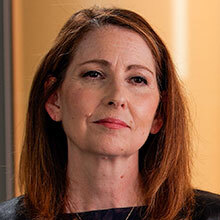
“Public schools were supposed to be equal for all. We were all supposed to start at the starting line and have a shot at life.”
At 8 a.m. on a Friday in early October 2021, Eva Moskowitz arrived at the Success Academy Springfield Gardens Elementary School in Queens, New York to discuss recent student assessments with principal Ashley Kubly and tour several classrooms. It was a typical day for Moskowitz, the Founder and CEO of Success Academy Charter Schools, who planned to visit two more schools that day before returning to the organization’s headquarters in Lower Manhattan. Moskowitz’s hands-on approach, keen focus on continuous improvement, and attention to the smallest details were hallmarks of her leadership style, as she worked to defy the odds and pursue what she described as a stratospheric goal: a network of urban public schools that would consistently produce positive outcomes and high academic achievement among socioeconomically disadvantaged students.
Moskowitz had faced a myriad of opposing forces over the years. As a New York city council member between 1999 and 2005, Moskowitz was committed to improving the district schools but had become frustrated over inertia and dysfunction in the system. The New York City Department of Education oversaw many district schools of varying quality. There were a few exceptionally high-performing schools, mainly located in wealthy zip codes, but most of the city’s schools were underperforming. After clashing with the teachers union, Moskowitz opened the first Success Academy charter school in Harlem in 2006, serving as its principal. By 2021, Success Academy operated 47 high-performing elementary, middle, and high schools in Manhattan, Queens, Brooklyn, and the Bronx, serving more than 20,000 students.
For Moskowitz, the fight was personal. As a product of the New York public schools herself, Moskowitz had witnessed firsthand the failure of the system to provide a quality education for all students.
Despite high levels of per-pupil spending, the K – 12 education system in the United States had long been criticized as underperforming. In 2018, the Program for International Student Assessment (PISA) ranked U.S. student performance in math 31st out of 37 member countries in the Organization for Economic Cooperation and Development (OECD) and 9th among OECD countries for reading, with 19% of students ranked as low performers in reading literacy.
Educational outcomes in the U.S. were also enormously unequal. Public schools were often economically and racially segregated due to zoning, with low-performing schools correlating with low-income zoning districts. Access to private schools was severely restricted by ability to pay, and homeschooling was generally not an option for single parents or dual-working parents. Test scores and data on life outcomes pointed to a distinct disadvantage among communities with low socioeconomic status. In the 2018 PISA survey, only 4% of disadvantaged students ranked as top performers in reading, compared to 29% for advantaged students in the U.S.
The first law allowing the establishment of public charter schools in the U.S. was passed in 1991 by the state of Minnesota. In 1995, the U.S. Department of Education recognized and began providing support for public charter schools. These not-for-profit public schools operated under independent boards and were exempt from certain regulations and restrictions facing traditional public schools. Any students eligible for district public schools could apply to attend public charter schools in their communities. If applicants outnumbered available seats, charter school rosters were usually determined by a lottery. Municipal governments were required to provide per-pupil funding for public charter schools, just as they did for district public schools, although often at a lower rate. By 2019, 45 states and the District of Columbia had established public charter school programs.
With close to one million students, the New York City (NYC) Department of Education operated the nation’s largest school district. The NYC school department reported that 73.7% of students lived at or below the poverty line in 2020. Students were enrolled in 1,608 public district schools and 268 public charter schools across the city’s five boroughs. The percentage of students enrolled in private schools in NYC was almost double that of other municipalities in New York state.

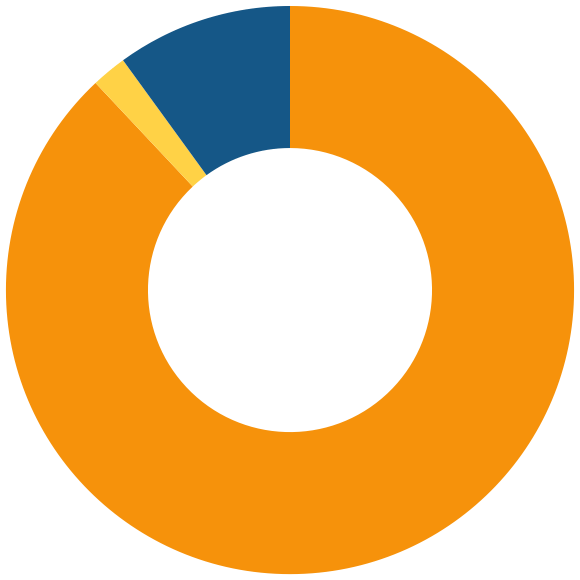
Source: Manhattan Institute for Policy Research, Inca
By 2020, 138,648 NYC students were enrolled in public charter schools, a number that had increased consistently over two decades.
NYC public schools were among the lowest performing but highest funded in the nation. Since 1969, the U.S. Department of Education had administered the National Assessment of Educational Progress to measure academic performance across states. In 2019, national percentages of fourth-grade public school students at or above proficient were 40% for mathematics, 34% for reading, and 37% for science. Public school students in the state of New York performed slightly lower than the national averages: 37% for mathematics, 34% for reading, and 33% for science.
On state assessments, NYC schools scored, on average, at or above the rest of the state. However, some schools in low-income areas such as the Bronx, which served mostly Black and Hispanic students, fared significantly worse than other schools, mirroring an interracial achievement gap across the nation. In New York City, 71 district schools had English proficiency rates below 20%, and 100 had math rates below 16%. Many of these were district schools in the Bronx. Over his tenure, NYC Mayor Bill de Blasio increased funding and resources; yet there was scant evidence of improvement at underperforming schools.
Some attributed lackluster educational outcomes to inequitable funding allocations, and others stressed the need for early intervention, pointing to disparities across home environments, where hours of television, time spent reading, and even number of words spoken could play a significant role in disparities in academic readiness. Numerous studies had shown that early language development skills correlated with children’s longer-term academic success, and that these early language abilities similarly correlated with family socioeconomic status. A 2017 study found a four-million-word gap by the age of 4 between children from families of high and low socioeconomic status. Children who grew up in lower socioeconomic status households spoke less, engaged in fewer interactions with adults, and were exposed to fewer adult words compared to children who grew up in higher socioeconomic status households. Similarly, a study from 2007 suggested that children’s language development at kindergarten entry explained the correlation between family socioeconomic status and school performance.
Certain education reformers insisted that government-led schools would be more accountable than charter schools run by independent boards and that socioeconomic integration in public district schools would resolve much of their academic woes. This fueled vehement political opposition to the growing enrollments in NYC public charter schools, and critics began to claim that charter schools selected out promising students, further segregating district schools.
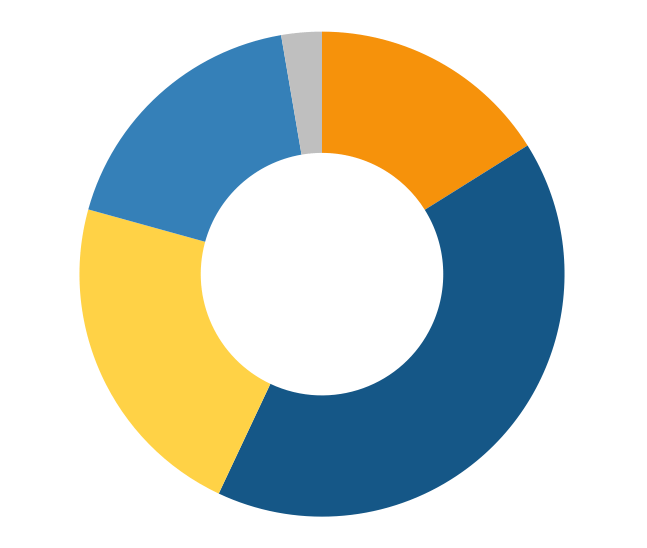

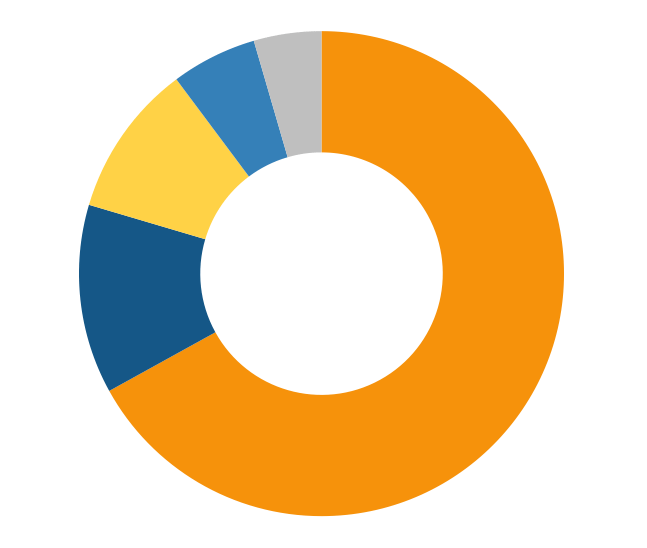
Source: Manhattan Institute for Policy Research, Inca
A barrier to improving district school outcomes, particularly in New York City, was the opposition to change by labor unions—teachers unions, principals unions, custodians unions, and more. During her tenure on the city council, Moskowitz served as chairwoman of the education committee. Having campaigned on a platform of education reform, she poured over the union contracts that governed the operation and maintenance of the city’s district schools and launched a series of oversight hearings.
When she left the city council in 2005, Moskowitz set out to prove what was possible. With a student body comprised almost entirely of students from low-socioeconomic households, Success Academy Charter Schools had achieved extraordinary outcomes, with superior test scores and college placement results.
In 2018, the New School Center for New York City Affairs published the tool below in Exhibit 4, that visualized the achievement gap in math for 220,000 students from all of the public district and charter elementary schools in NYC. The data were based on results from 2016 state-mandated yearly math tests and were categorized by racial/ethnic group and income. The visualization showed “how strongly and how frequently [the achievement gap was] moderated by the household incomes of students, even within the same schools.” However, the data in Exhibit 4 showed that some schools, notably Success Academy Charter Schools, had different outcomes.
In 2019 standardized testing, Success Academy third- through eighth-grade students again dramatically outperformed their peers from New York City public district schools and other public charter schools.
In New York City, charter school outcomes were often superior to those at district schools, most notably among Hispanic and Black students living in poverty. Advocates often said that charter schools aimed to improve the socioeconomic disparity that existed within K – 12 education, claiming that competition increased the quality of education across all public schools by raising standards and expectations and pointing to educational innovation at charter schools. Yet opponents criticized charter schools as a “drain” on resources from district schools.
After a remarkable trajectory—opening 47 schools in 15 years—Success Academy's growth plateaued by 2020, due to the state’s reluctance to raise the charter limit and the city’s unwillingness to approve co-locations for charter schools, the practice of housing schools in the same public school building.
With scholars (how Success Academy referred to its students) returning to the classroom in the fall of 2021, after 18 months of remote education during the Covid-19 pandemic, Moskowitz and her team wondered how they might restart their expansion plan and continue their work to convert detractors and skeptics into supporters.
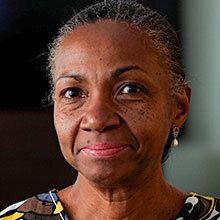
“There are a myriad of elements that make up our school design. We like to think of it as the intentional decisions that span from aesthetics, to the schedules, how we outfit our classrooms, and obviously the curriculum.”
In 2005, investors and charter school advocates John Petry and Joel Greenblatt were looking to start a charter school that would use Success for All, a reading program that evaluated students every eight weeks and assigned them to groups with other students at the same reading level. Greenblatt and Petry had a longer-term vision of developing a charter school system that cost no more per-pupil than district schools, then replicating that model. Excited by the prospect of educational reform, Moskowitz accepted Petry and Greenblatt’s offer to run the first school, after losing her bid for Manhattan borough president in the 2005 city council elections. In 2006, Harlem Success Academy welcomed its first 165 scholars into kindergarten and first grade.
By 2021, enrollment had grown to about 20,000 scholars across 30 elementary schools, 15 middle schools, and 2 high schools, all in New York City. Moskowitz and her team had decided from early on that they would only enroll new scholars in elementary school—kindergarten through fourth grade. This differed from other charter and district schools, where new students could transfer in at any grade level from K – 12.
The personnel at Success Academy were constantly thinking and innovating. In pursuit of a quality educational experience for their scholars, they focused attention on classroom details often overlooked by other schools. This intentionality drove the system’s school design—from the classroom rugs to the timeline around enrollment. Classroom design went beyond the physical details of the classroom, addressing how scholars and teachers could make best use of scarce classroom time. For instance, kindergarten scholars learned proper classroom behavior to “track” the teacher, giving their full attention through eye contact, stillness, and listening, and to walk quietly and orderly through the hallways. Scholars learned to use hand-signals to indicate agreement or disagreement with peer comments or to request to use the restroom, thereby not disturbing the flow of the class.
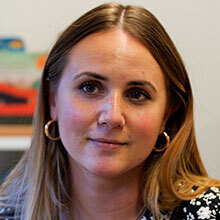
“I’m the first teacher parents meet at Success Academy, so it’s an immediate team. We really try to be proactive and lay out clear steps that parents can take to support their child from day one. We’re calling parents for the good and the bad. I really see the fruit of building those relationships with parents every year, because it also helps my relationship with their scholars in my classroom.”
A key component of Success Academy’s formula was the unique partnership cultivated between the school and its scholars’ families. Success Academy required the buy-in of parents to ensure uniform dress code compliance, attendance at rallies, on-time attendance records for scholars, completion of reading logs, and much more. This partnership, which began in kindergarten, fostered a sense of community amongst administrators, educators, parents, and scholars themselves.

“Success Academy does demand a lot from parents, but it’s nothing we can’t handle. Getting your kids here on time, making sure homework is done, making sure reading logs are done, getting into the right apps for remote learning. These are things we’re supposed to do as a parent. Just here, we need to be more on top of it.”
The rapid expansion of Success Academy was facilitated by a highly centralized structure. Unlike the district school system and other charter schools, Success Academy separated its academic and administrative/logistical functions. Principals and associate principals focused primarily on the academic arm of their schools, so they could specialize and hone in on academic improvement. Each school had a business operations manager to ensure the facility was well-equipped, safe, clean, and efficiently run. A central entity dubbed the “Network” oversaw the administrative and logistical arm of the entire Success Academy system: hiring and training of teachers and staff, curriculum design and development, building renovations, enrollment, supply chain, payroll, and other centralized support.

“Parents don’t have to think about minor stuff like supplies. Most of our parents can’t afford to buy them, so putting that extra burden on them is a big thing. But here at Success, we supply everything. The parents’ job is to get their child to school and help them to succeed.”
Teachers at Success Academy charter schools made plans around a central curriculum prepared by the Network. When Moskowitz opened the first school in 2006, she intended to purchase curricula and lesson plans from outside vendors. Right away, however, she realized the curricula fell short and began the work of producing them herself.
By 2021, Success Academy Charter Schools had a full team of curriculum writers and robust elementary, middle, and high school curricula.
To support its unique school design, Success Academy needed passionate and well-trained educators who could adopt and execute the model. Training was a top priority. In the two weeks prior to the first day of school and every Wednesday afternoon throughout the school year, senior leaders (Success Academy’s moniker for school principals) helped orient and reorient teaching in accordance with data and the goals of the curriculum. By contrast, teachers at district schools typically arrived each fall only one day before students and had only three non-teaching professional development days across the entire year.
Success Academy strove to build a diverse community and hire educators who reflected the backgrounds of its scholars. Across the United States, about 20% of teachers were non-white. In New York City, teachers of color represented about 42% of all educators—one of the highest percentages in the nation. Teachers of color at Success Academy represented about 50% of educators.
As Success Academy worked to achieve a high level of excellence in student outcomes, teacher training, family involvement, and extracurricular programs, many of its processes had been iterated and reiterated to optimization. Still, Success Academy’s curriculum and structure had not remained stagnant. Everyone, from teachers to principals to Moskowitz herself, continuously sought ways to improve. This produced a culture conducive to quick adjustment and flexibility.
Success Academy’s results had not gone unnoticed. Parents in neighborhoods with low-performing district schools were applying in droves. The ratio of applicants to available seats averaged 6 to 1, with more than 90% of eligible students applying in some areas. Applications were most abundant in areas with low-performing district schools, including the Bronx.
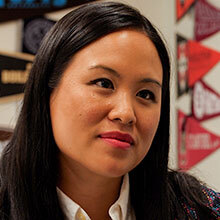
“Our first four graduating classes have had 100% college acceptance. On average, three out of every four seniors will get a financial aid package that meets their family’s full financial need.”
On May 26, 2021, after over a year of remote learning, all 129 scholars of Success Academy’s High School of the Liberal Arts convened virtually for their graduation ceremony. Even more remarkable than graduating 100% of the senior class during a pandemic, was the 100% college acceptance rate and the fact that 71% of students received at least one offer that met their family’s full financial need.
By comparison, across the entire NYC public school system, bachelor's degree enrollment rates were around 30% for Black and Hispanic students and also roughly 30% for low-income students. As the largest Success Academy senior class to date, the class of 2021 had again achieved what all three preceding graduate classes had accomplished—gaining acceptance to college, including prestigious institutions such as Columbia University, University of Chicago, Yale University, and University of Pennsylvania.
Such results were hard fought. Most of these scholars, although educated as well as students at some of the most elite K – 12 institutions, were from impoverished and non-college educated families. Many had difficult family situations; some were homeless. Amongst these challenges, Moskowitz needed to build out a team equipped to help these scholars and their families navigate not only the complicated college application but also financial aid processes.
Apart from the application process, educators and advisors focused on helping their scholars develop persistence and autonomy. After all, Success Academy was preparing students for the challenges of college and beyond, where they would need to thrive on their own.
The Network managed Success Academy Charter Schools and was funded by a management fee that represented 15% of per-pupil revenue from the individual schools. In 2020, the schools and the Network received approximately $333 million in revenue, derived primarily from state and local per-pupil operating revenue. About 11% of the budget, $40 million, came from philanthropic donations, which primarily funded the Network’s research and development of K – 12 innovation as well as some costs associated with the opening of new schools, which district schools usually funded through their capital budget of $19 billion.
To teach to its 20,000 enrollees in 2020, Success Academy schools employed 2,177 full time employees, of which 1,717 were instructional personnel. The Network employed approximately 300 individuals, including Moskowitz and LaMae de Jongh, the Chief Schooling Officer. Approximately 69% of the enterprise budget (schools and Network combined) was devoted to salaries, benefits and professional development, with the remaining 31% split between facilities and renovation, technology and student services, instructional supplies, and other expenses.
By comparison, for the 2021 – 2022 school year, NYC district schools deployed an operating budget of $18 billion, support costs of $6 billion, and non-instructional costs of $5 billion. Support costs included custodial, facilities, and central supports; non-instructional costs included food, busing, and building payments. The budget included philanthropic donations of approximately $45 million, with an additional $114 million raised and spent by local Parent Teacher Associations. The NYC Department of Education employed 140,000 total employees, including 75,000 teachers, to instruct roughly 955,000 district students across approximately 1,600 schools.
District schools and charter schools both provided special education. About 15% of scholars at Success Academy Charter Schools needed special education or an Individualized Education Program (IEP), which were determined by the Committee for Special Education under the DOE that reviewed and ruled on the evaluations and requests made by psychologists, educators, and parents. Much like district schools, charter schools received slightly more funding for each student with special needs; per-pupil funding for students with special needs approximately equaled out regardless of whether they attended a district or charter school. Success Academy called its special education program ‘Sprint.’
Within Sprint, most scholars with IEPs were taught by two teachers—one for general education and one specializing in special education—in an Integrated Co-Teaching (ICT) classroom of roughly equal numbers of scholars with IEPs and general education scholars. In certain grade levels and schools, Success Academy educated scholars with more challenging special needs in “12:1” classrooms, although for families with logistical difficulties or those unable to find transportation to these campuses, Success Academy might not be the best fit. Success Academy implemented the same core tenets in ICT and “12:1” classrooms that it did in all classrooms, and scholars learned from the same curriculum, while the two lead teachers targeted individualized needs. Some scholars eventually outgrew the need for Sprint services and transitioned to regular classrooms.
Typically in the NYC public school system, students with the highest special needs could not be properly served by any district or charter school. They instead attended highly specialized schools within District 75.
Success Academy faced tremendous political opposition and criticism from the United Federation of Teachers and some elected officials. These opponents often argued that public charter schools "siphoned" money and students from public district schools. Funding to district schools was redirected to charter schools based on enrollment, which district schools argued complicated their ability to meet fixed operating costs. However, the decrease in funding was accompanied by a decrease in the number of students served by the district schools. Moreover, low-performing NYC district schools had long been losing students to attrition from affluent families who opted to enroll their children in private schools or homeschool them. Additionally, budget shortfalls for district schools were often covered by the City of New York; for example, in 2021, district schools lost roughly 43,000 students—mainly in pre-K, kindergarten, and schools that serve new immigrants—yet their $130 billion in cuts were reversed by the city. A 2021 study suggested this common criticism warranted reevaluation.
Critics highlighted the high teacher-turnover rate at charter schools. Educators were held to a high standard of teaching and organizational technique, and most charter school teachers were not unionized. But overall, charter schools did not aspire to retain teachers for decades; instead, they often cultivated a startup-like culture, where energetic and highly motivated young talent were recruited for the first of what were sure to be many career moves. Additionally, some churn could be explained by experienced teachers at a charter school leaving to teach or administer in a new school but staying in the same network. Still other critics claimed that charter schools could not serve students who were especially disadvantaged either financially or in needing special education.
Even among charter schools, Success Academy attracted a higher level of scrutiny and criticism from various groups, including from labor unions, the media, and Mayor de Blasio. Teachers unions and some elected officials claimed that Success Academy, widely recognized as the top-performing public-school network in NYC, ‘cherry-picked’ the best students from district schools while weeding out weak students through counseling or disciplinary techniques. Moskowitz strongly rejected these claims, pointing to a 2014 study by the NYC Independent Budget Office. The study, which compared elementary grade student attrition rates at charter schools with nearby district schools, found that about 70% of students attending charter schools in the 2008 – 2009 school year remained in the same school 3 years later, compared with 61% of students attending nearby traditional public schools 3 years later. Researchers concluded that, on average, students stayed at charter schools at higher rates than students in district schools, including special education students.
The battles over expansion were also fierce. In its first 15 years, Success Academy had grown rapidly, while enrollment at district schools had dwindled. Success Academy had found itself the target of not only union furor but also the antipathy of Mayor de Blasio, who blocked requests to co-locate in underutilized city school buildings.
Calling American public education “broken,” former NYC Mayor Michael Bloomberg pledged $750 million in philanthropic donations to support charter school expansion in urban school districts across the country. In a December 1, 2021 editorial in The Wall Street Journal, Bloomberg argued that “Instead of giving students the skills they need to succeed in college or in a trade, the public education system is handing them diplomas that say more about their attendance record than their academic achievement. This harms students, especially those from low-income families.” Bloomberg cited Success Academy as a model for high-achieving urban public education. “Their students are outperforming public-school students in Scarsdale, NY—the wealthiest town on the East Coast and the second-wealthiest town in America—by significant margins.”
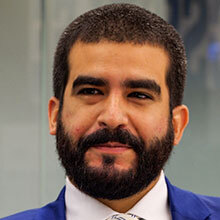
“Part of our job is to think about all children in New York City and to advocate not only for the scholars within our four walls but also the students who unfortunately stay on the waitlist or don’t have the same opportunities that our students have.”
Advocacy was not only part of Success Academy’s mission to grant all children a world-class education, it was also a necessity to support their services to enrolled scholars. Moskowitz and her team met often with political officials and focused on positive outreach, and this spirit was imbued into the SA community. In 2014, scholars, parents, and staff rallied at the state capitol in Albany, NY to protest de Blasio’s reneging on three co-locations. In 2015, Success Academy again marched for the charter school movement—this time across the Brooklyn Bridge.
With more than 20,000 children already enrolled and a growing waitlist, Eva Moskowitz and her team set their sights on building out further capacity. Expansion had historically been limited by the number of charters granted by the state to open new schools. These limitations, which took the form of a cap on the number of charters, had been raised three times since 1998, when charter schools were first authorized in the state of New York. Since 2019, when the most recent statutory limit on charters was reached, no new charters could be granted unless the state legislature voted to lift the cap, an issue that had been the focus of Success Academy’s advocacy. Expanding the number of high schools and middle schools was within the scope of their current charters, but additional elementary schools would require legislative change.